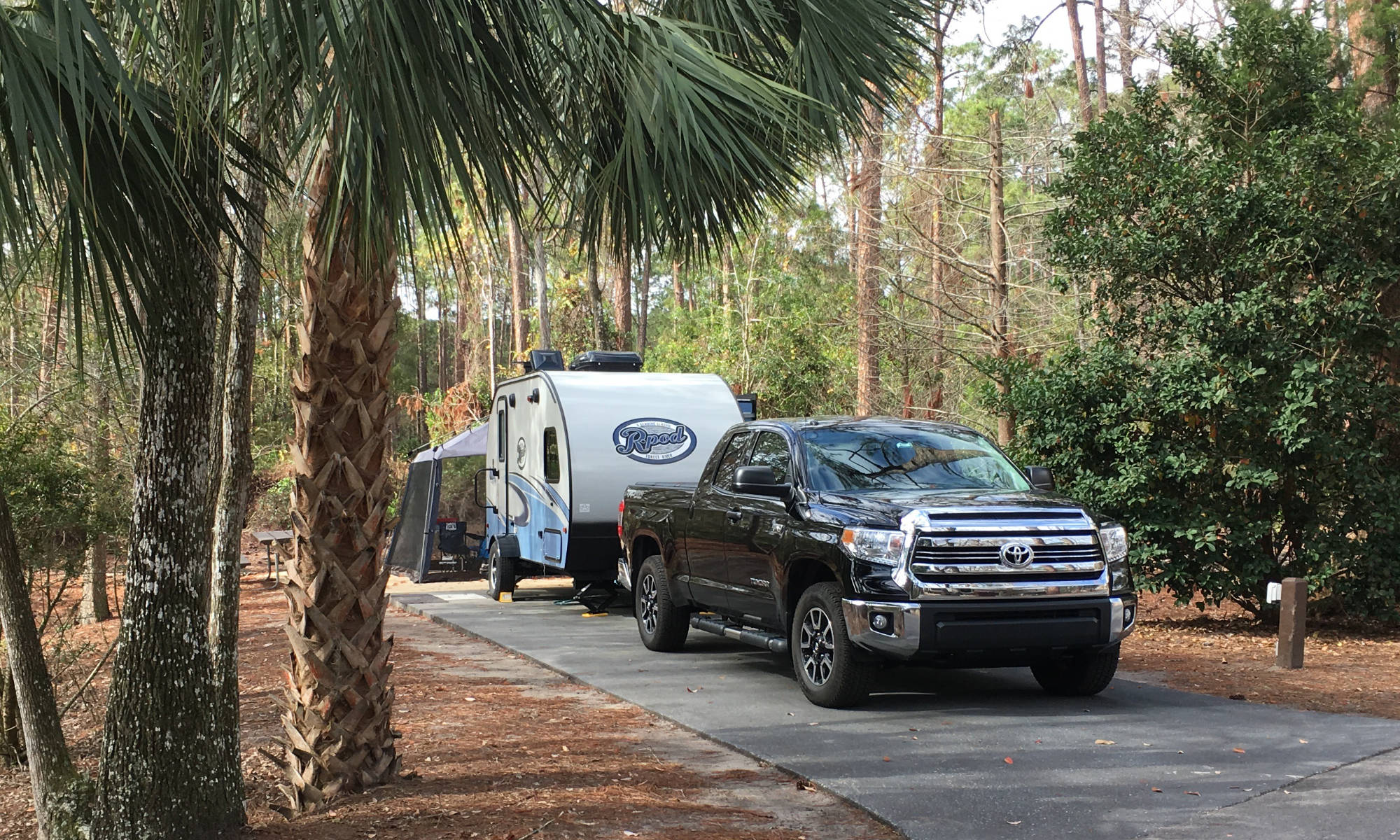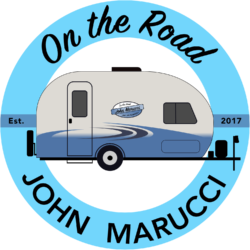In this blog, I’ll do an honest five-year ownership review of my recently sold 2017 R-Pod 179, including a full cost of ownership analysis. Toward the end, I’ll discuss whether I’d rebuy an R-Pod. My 2017 R-Pod was the first travel trailer I used extensively for longer trips, and while there were many maintenance issues to deal with over the five years, generally, I think the R-Pod 179 was a good smaller RV floorplan for exploring.
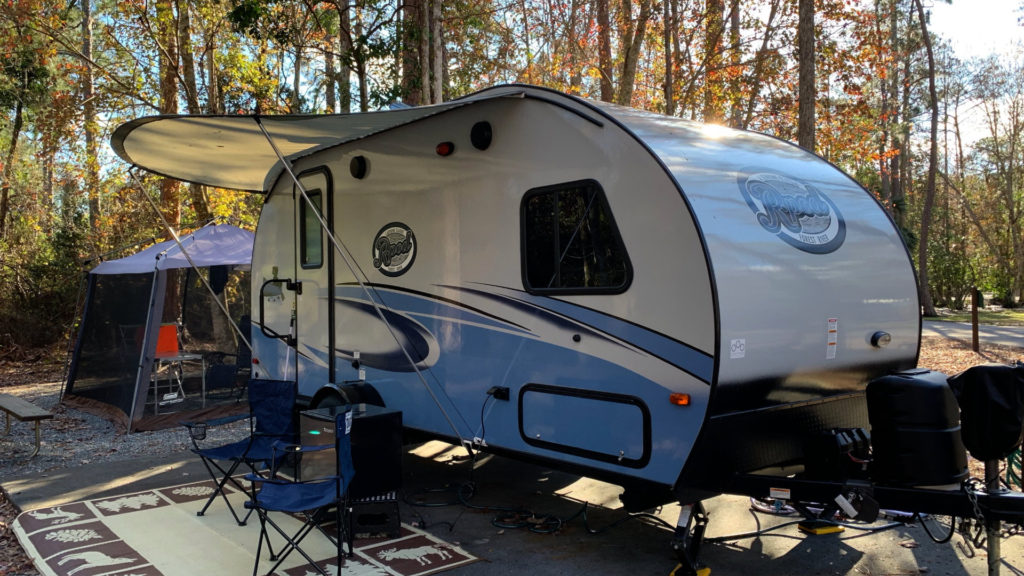
I purchased my 2017 R-Pod in April of 2017 and used it extensively over the next two years, tallying over 200 nights of use. After the first two years, I purchased a second RV and tallied fewer overall nights of use.
Highlights of Ownership
I can’t talk about my R-Pod 179 without speaking briefly about the many structural and ongoing maintenance issues accompanying my ownership experience. My 2017 model was built during a record production year for RVs. The R-Pods at that time were smaller but highly appointed entry-level travel trailers, usually landing in the mid-teen thousands of dollars in pricing. I’ll get into details around my total cost of ownership in a moment, but safe to say that the entry price was not very high versus today.
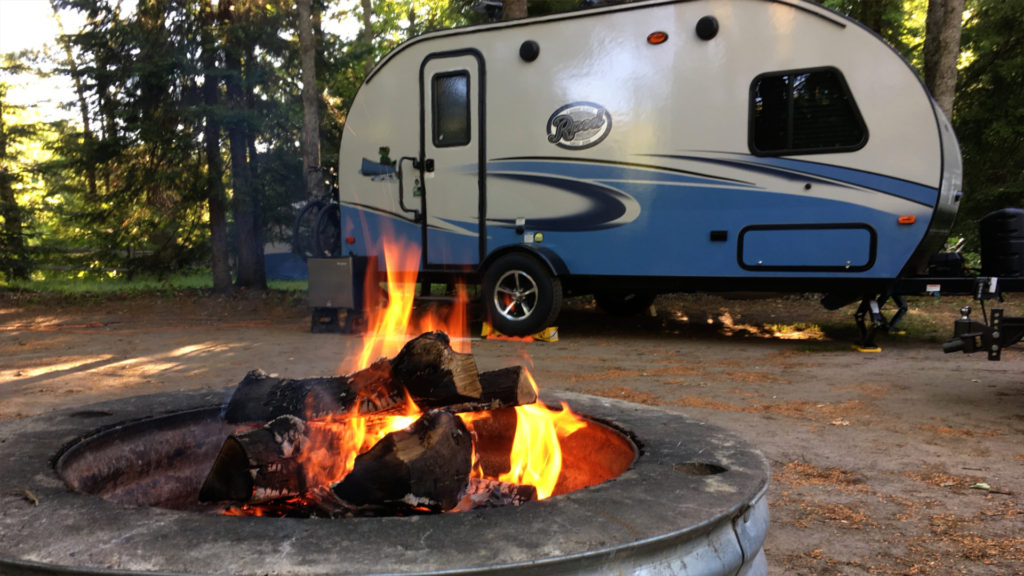
My 179 was generally good in terms of initial quality until we took it on its first longer trip. At that point, several things happened, including the infamous black-tank hanger issue and severe cracking on an area of the fiberglass. There is a complete breakdown on Year-1 issues on the video called, R-Pod 179 – 1st Birthday Review. I reported these issues to Forest River’s R-Pod warranty department at the time, and they invited me to the factory to have everything fixed. They did the work well, and I was back using my 179 quickly.

I mention in several R-Pod videos that at the time of purchase, in April 2017, Forest River had an optional second-year full warranty extension program for only $150! I gobbled this up at the time as it seemed like a great deal. Forest River discontinued this warranty extension offer shortly thereafter.

I made good use of this warranty extension the following year when my kitchen floor began to develop a significant flex. Unfortunately, the same warranty department person wasn’t nearly as accommodating this time and made me take the trailer back to my purchasing dealer 150 miles away to confirm the issue.

The dealer couldn’t or wouldn’t touch the floor flexing problem, so I still needed to take the trailer back to the factory, which was only 40 miles away, to have them fix the floors. I have two videos on this painful exchange with the R-Pod warranty department, which reveal how they dealt with me and what eventually happened to fix the issue. It was a painful experience, and I had to be very persistent, but the factory reinforced the floors. I suppose some good came out of the floor reinforcement as this fix became the repairing standard for people who had the same issue after me.
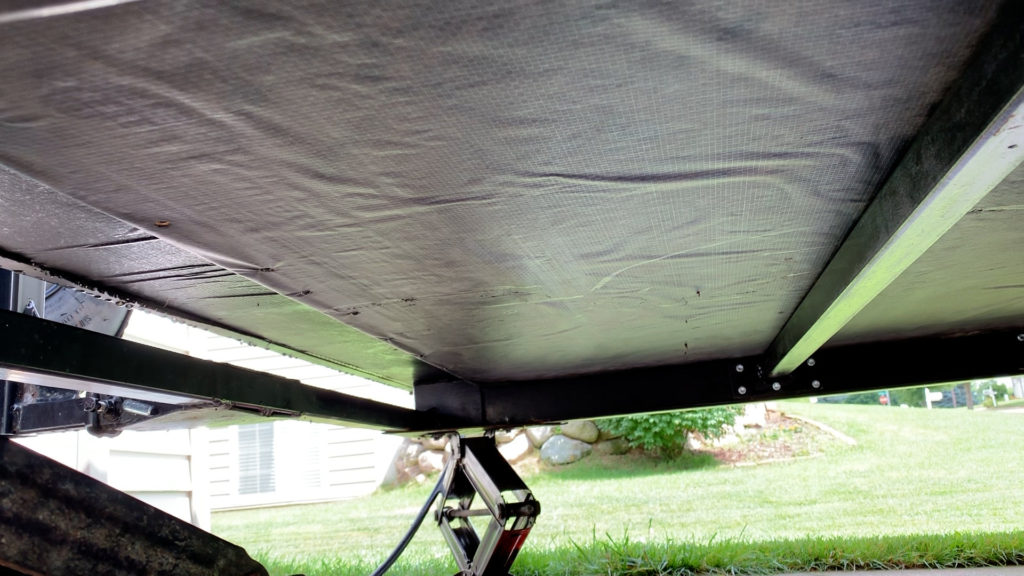
For the next three years, the trailer was used mainly at Michigan State Parks, with most trips being less than a week, although there were some slightly longer and shorter trips. While the usage of my R-Pod 179 relaxed in years 3-5, unfortunately, the maintenance issue continued, concluding in likely the most significant structural problem to deal with, the addition of several outriggers to the frame to bolster the slide-out wall sag. All these issues and fixes are detailed in several videos, and I have over 37 R-Pod-specific videos to watch if you are interested in more detail.

To leave the impression that my R-Pod 179 was only a pain would be incorrect. It did facilitate many great shorter and longer camping trips. Yet when I think back, I remember the problems, how much work was put into fixing things, and how I was treated (sometimes poorly) by the company. So, it was a very mixed bag.
Cost of Ownership
Let’s move on to the cost of ownership, where I’ll break down costs for the five years. I’ll talk about the rental cost, meaning how much it cost me to rent the unit for the time I owned it. I’ll not include gas and campsite rentals in the analysis since they are variable.
We’ll start with Initial Purchase Price + Dealer Fees + Tax. We’ll add additional equipment purchases, supplies, repairs, insurance, and storage, minus resale value to this upfront cost. Resale is what I sold the trailer for minus sales costs. I’ll take this number and divide it by the number of months I owned the trailer to yield a monthly rental cost. I’ll also calculate the rental cost per night.

So here we go…
The total purchase cost was $16,747. This included the trailer, Blue Ox weight distribution hitch, dealer fees, and tax. This number is straight from the purchase agreement of April 2017.
Additional equipment, supplies, and repairs over the trailer’s life were $3809.78. Way more than I expected. Insurance for 61 Months was $921.57, and storage for 61 months was $2,110.50.
The resale was $17,470. When you add it all up and subtract the resale value, you end up with a total rental cost of $6,138.95.
The monthly rental cost for the 61 months ends up being $100.64. We used the R-Pod 179 for 320 nights in five years, so the nightly rental cost was $19.18.
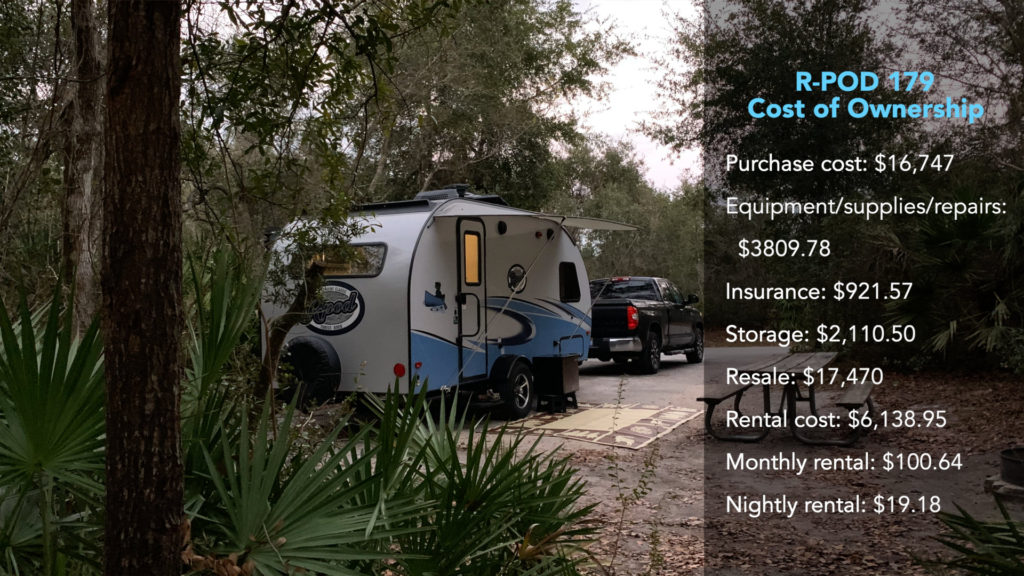
It could be argued that incremental travel expenses should be added to the total cost of ownership, but you would then have to net out the opportunity cost of other travel not taken due to using the RV. It gets too complicated to calculate, so we’ll leave it to the above analysis. Also, what isn’t mentioned is the DIY time involved for all the repairs and maintenance. There is an obvious opportunity cost for the time involved that isn’t included. All to say that ownership wasn’t inexpensive, and there was way more cost and time to owning the R-Pod than I would have imagined before purchasing it. Notice that my additional equipment, supplies, and repairs totaled nearly 25% of the after-tax purchase price.

Would I recommend or buy again?
So, given all this, would I rebuy the same trailer? Better yet, what would I tell myself back in April 2017 before I bought the R-Pod 179? Honestly, I would say that this won’t be the most reliable or well-built trailer and will cost a lot of time, effort, and money to maintain. Your interactions with the manufacturer will be good during the first year, then generally fair to poor the rest of the trailer’s life. I would tell myself to buy locally next time and find a reliable dealer. I would say that you should never buy a trailer without a solid structure, composite floors, or a warranty of fewer than two years.
I would also tell myself that pretty much every problem you run into with owning the R-Pod, from converter failures to floor bounce to missing outriggers, will be used to help others know what they are getting into or help others fix something you will go through. You’ll go great places and enjoy traveling by RV. So, in this regard, the problems will be worth the trip.
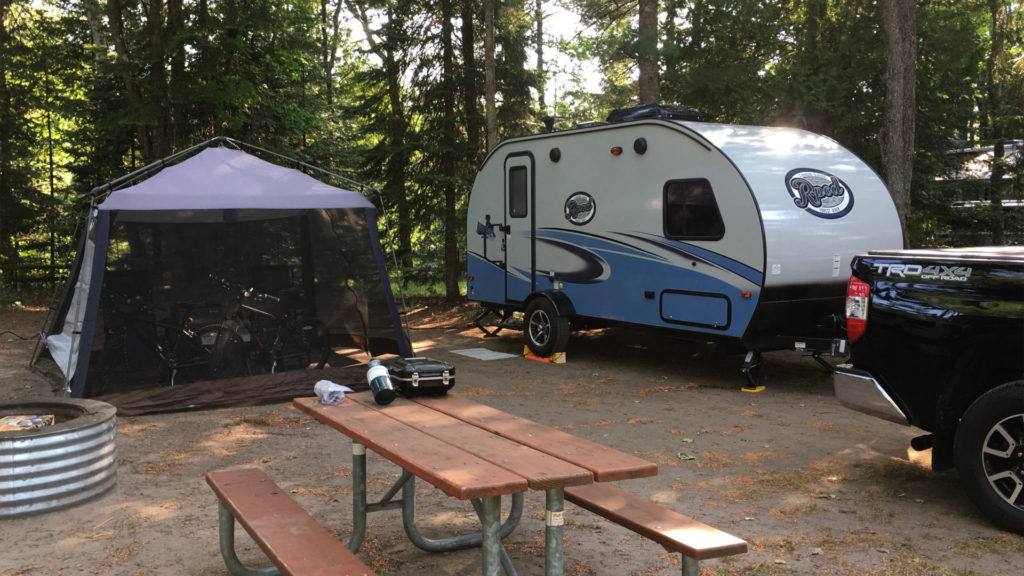
Finally, as a reminder, this review is for a 2017 model year R-Pod, not one of the newer models. Many things have changed with R-Pods in the past five years, including the addition of Azdel walls and better structural supports. Unfortunately, at the time of taping this video, R-Pods still have only a one-year warranty and lack composite flooring – two things that have caused me to look elsewhere when considering my next RV. Depending on when you are watching this, Forest River and R-Pod may have changed these items.
Okay, that should do it.
All the best in your camping endeavors!
As always, thanks to our fans who support our efforts by starting their shopping from our Amazon Storefront and by their generous financial support by using the THANKS feature located under each YouTube video ($ within the Heart icon). Your support is greatly appreciated!
